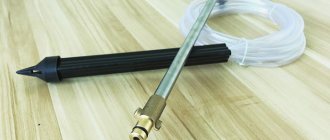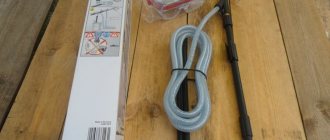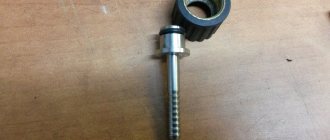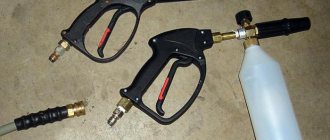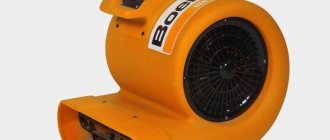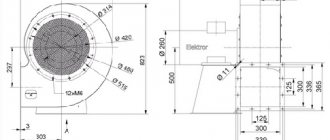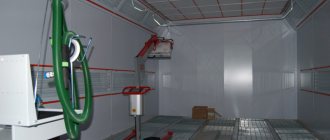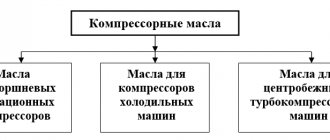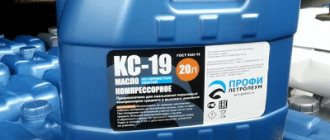There is a hydraulic system in every production equipment, industrial machinery and ordinary cars. And any hydraulic system has high-pressure hoses. These hoses are generally quite durable and reliable. But like any mechanism, they break down over time. In such an unpleasant situation, it is important to know what to do and who to contact to troubleshoot problems. It is best to contact certified technicians who specialize in repairing high-pressure hydraulic hoses.
At Eurohydraulic we manufacture and repair hoses on site.
How to crimp a high-pressure hose with your own hands?
One of the most reliable clamps for crimping a high-pressure hose are the so-called (cast universal clamps; there are many types of such clamps, here is one of them:
Clamps (galvanized wire clamps) can also be classified as highly reliable: they look like this:
Then there are clamps that are also just as reliable as those listed above (galvanized steel clamps), these look like this:
Well, there are also so-called (power clamps) they are used for hoses with increased rigidity and hardness; one of the types is a two-bolt clamp:
How to crimp a high-pressure hose with your own hands?
The name of the hose itself suggests that it is intended for use in high-pressure systems, and accordingly, it is manufactured using a special technology using appropriate materials. Therefore, it is difficult to reliably crimp such a hose (to repair a problem area or equip it with the necessary fittings) with your own hands without using special machines or devices.![][1 ]
Of course, if you need to repair such a hose and use it for watering a garden where there is not high pressure in the system, you can go the route of using various “herringbones” with reinforced clamps (everything is done according to the standard scheme - the problem area is cut, the “herringbone” is inserted and crimped clamp.
It's another matter if the hose is used in high-pressure systems. In this situation, you cannot do without equipment. For example, our metallurgical equipment uses high-pressure hoses (high-pressure hoses), so the safety service and the equipment reliability service monitor the condition of such hoses and do not allow the use of those repaired by hand (manual pressing devices, similar to those indicated by colleagues) are not allowed to work . These include injuries, accidents and lost production. Therefore, I will not advertise this work using various devices.
This must be done by specialists and using special equipment.
Source
Do-it-yourself hose crimping machine - Metals, equipment, instructions
To manufacture hose hoses, TsPK LLC placed Finn-Power equipment in its warehouse in Moscow, and we also use Parker components.
The high pressure hose is an indispensable and one of the most important parts of the production process. It transports gases and liquids. But installation of high pressure hoses requires special equipment for reliable fastening of hoses and their strong connection.
Lines for the production of high-pressure hoses today need to be equipped with special crimping equipment. Machines and presses for crimping high-pressure hoses are available in various types and sizes and can be used both in industrial conditions and for urgent repairs anywhere (mobile presses).
Types of hose crimps
Pressure testing of high-pressure hoses is carried out using specialized equipment. The technological process is quite labor-intensive and requires care and precision. Today, mainly two methods are used for crimping:
- 1. European (longitudinal). This method is also applicable when crimping braided hose hoses. The essence of the method is as follows: the internal coupling is equipped with ring teeth, which are inserted into the sleeve braid, ensuring a reliable connection. When crimping two types of hoses - 1SN and 2SN - the outer thin layer of rubber is not removed. This allows you to make the connection even tighter.
- 2. Cross crimp. This method is considered classic and is used most often. Used in crimping high-pressure braided hoses. This process uses a tubular coupling. The process is as follows: the top layer of rubber is removed along the entire length, which holds the sleeve from the inside with transverse protrusions. The coupling is pressed tightly against the sleeve and provides fastening.
Traditional crimping is transverse. Longitudinal is most often used for crimping hose hoses with metal braiding of domestic production, produced in accordance with GOST 6286-73. Such hoses are the most economical and reliable in operation.
In hydraulic systems with high pressure, longitudinal crimping methods are mainly used. The sharp teeth on the coupling cut firmly into the metal braid, allowing you to avoid scraping off the top rubber layer.
The connection is sealed due to high pressure compressing the sleeve on the nipple.
Crimping equipment can be divided into types depending on the scope of application:
- The service press is most often used in workshops and small-scale or even single-piece production;
- a mobile press is in demand for urgent repairs, mines and replacement of high pressure hoses directly on site;
- an industrial press is used in large-scale production.
Features of the machine for the manufacture of hose hoses
The hose crimping press is part of the production line. Today on the market there are both small mobile machines and stationary ones for industry. When choosing a machine, it is necessary to take into account the initial parameters of working with the equipment: the type and diameter of the hose, the maximum size of fittings, the type and performance of the machine.
The scope of use of crimping machines is quite large:
- · production of hydraulic hoses;
- · production of auto parts;
- · production of construction equipment;
- · production of sea and railway transport;
- · production of wire, hoses, pipes and pipelines, cables.
The crimping machine has the following features:
- · works from several sources: battery, compressed air or manually;
- · crimping accuracy is always at its best;
- · the design of the machine is convenient and ergonomic, it is easy to operate;
- · quick pressure testing of hose hoses is possible due to the system for quick replacement of cams;
You can use the machine in production conditions and on site.
Selecting a crimping machine
The reliability of fastening of sleeves and hoses depends on the quality and performance characteristics of the equipment. When choosing, pay attention to the details and characteristics of machines and presses:
- 1. Crimping speed. This parameter is especially important in production. Machines with high crimping speeds are used in multi-batch production and various conveyors. In standard press models, the speed ranges from 300–2500 crimps per hour.
- 2. Mobility. In industrial conditions, mainly stationary powerful machines are installed. In the field, for urgent installation and repair, mobile portable presses will be required.
- 3. Crimping force. Varies between 3500-12000 kN.
- 4. Working diameter. The maximum permissible opening of the crimping jaws in millimeters shows the permissible size of the hose that can be crimped.
High-pressure hoses are used today both in large enterprises and in small workshops. Crimping of the hose may be required at any time. A high-quality crimping machine is a guarantee of connection reliability, long service life and strength of the connection point.
We manufacture hose hoses of any complexity and sizes up to 2.5 inches. with fittings made of galvanized and stainless steel, as well as polymer protection (plastic spiral).
Contact us by phone +7 (495) 247-87-27. We are located at: 115230, Moscow, Elektrolitny proezd, 3, 5 minutes from the Nagornaya metro station.
Manufacturing and repairs are possible in front of you and in the shortest possible time!
Business in the production of high-pressure hoses (HHP) (November 2018) - how to open from scratch, examples and a ready-made plan with calculations for beginners
Train your brain with pleasure
Start developing
High pressure hoses are a pipeline through which any gas or liquid can be distilled. They are used both in everyday life and for industrial purposes. Of course, the characteristics of these products, depending on the purpose, are different. These products also exist on the market from manufacturers from Europe and the CIS countries. Today we will look at how to set up the production of high-quality high-pressure hoses.
- What equipment to choose for the manufacture of high pressure hoses?
- RVD production technology
- Franchise business
- Step-by-step plan for starting a business
- How much can you earn
- How much money do you need to start a business?
- Which OKVED code must be specified for the production of high-pressure hoses?
- What documents are needed to open
- Which taxation system to choose for the production of high-pressure hoses
- Do I need permission to open?
This product requires certain knowledge of the technological process. It is also impossible to organize a production workshop without special equipment. It comes in different capacities and differs in other characteristics. You need to study them before purchasing. It would also be a good idea to find out reviews from industrialists who are already working on it.
What equipment to choose for the manufacture of high pressure hoses?
You can buy equipment for the production of hose hoses in the form of a finished line or each machine separately. The standard kit looks something like this:
| Machine name | Price, thousand rubles |
| Crimping press or crimping device | 200,00 |
| Cutting machine | 80,00 |
| Apparatus for stripping rubber inside and on the surface of hoses | 60,00 |
| Marking machine | 50,00 |
Additional equipment (rolls, frames) will cost another 150 thousand rubles. The prices in the table are the minimum prices. This price segment of equipment will provide an opportunity to open a small production facility.
This is enough to start a business, since it is very important to determine the channels for future sales of products.
After establishing strong partnerships with customers, you can think about increasing production capacity.
To make a high-pressure hose you will need the following equipment:
| 1 | Crimping machine or crimping press. |
| 2 | A device for removing the upper and inner layers of rubber from high-pressure hoses. |
| 3 | Equipment for marking. |
| 4 | Roll for unwinding coils. |
| 5 | Racks for presses. |
| 6 | Storage for a set of jaws. |
The technological process can be divided into several stages:
- preparatory work with material and equipment setup;
- crimping operation;
- quality control and testing of finished products.
High-pressure hoses are distinguished by the type of metal coating. They can be made by braiding or winding. I also use different materials for this process.
Goals and specifics of work
A high-pressure hose (or, more correctly, sleeve) is a flexible pipeline designed for transporting liquids. By definition - under high pressure. The goal is to transmit working force in hydraulic systems for various purposes.
The most obvious example of the operation of a hydraulic system, which each of us has observed many times, is the lifting of a dump truck body. A simple supply of fluid to a hydraulic cylinder under high pressure allows you to develop a force of tens of tons without the use of complex and quickly wearing out mechanics with multi-stage gearboxes.
The hydraulic cylinder is movable, and to ensure operation, a working fluid supply mechanism is needed that satisfies two conditions:
- Flexibility . More precisely, the ability to withstand repeated bends with a relatively large radius. This requirement immediately rejects the possibility of using any metal pipes.
- Ability to withstand the highest pressures - from 40 to 450 atmospheres.
It’s interesting: all high-pressure hoses are tested at twice the stated operating parameters. Thus, an 8-mm hose of types 2 ST and 2 SN at an operating pressure of 350 atmospheres is tested at 700.
The remaining characteristics of the hose operating mode are also extreme:
- The minimum operating temperature range for them is from -55 to +100C. It is clear that hydraulics must work normally even in the harshest winter conditions; In addition, when working under enormous pressure, both the working fluid and the line for it become very hot.
- The liquid is not relatively chemically inert water, but mineral oils, petroleum distillation derivatives, glycol compounds or various types of lubricants.
The fittings, accordingly, will have to ensure the connection of the flexible hose with the fixed parts of the structure. They are required to have both their own mechanical strength and chemical resistance, as well as high reliability of connection with the hose.
Selection and correct use of crimp couplings
The choice of crimp couplings must be made based on the type of high-pressure hoses, their characteristics, dimensions and purpose. For hose hoses of types 1 ST/SN and 2 ST/SN, lightweight couplings are suitable; to work with hose hoses of types 4 SP/SH, R12 and R13, it is necessary to use reinforced couplings. In most cases, it is sufficient to use universal couplings, although in the manufacture of some pipelines, end fittings with specially designed couplings may be required.
Corrugated couplings are best suited for rubber hose hoses, which ensure the most reliable installation during longitudinal crimping. Smooth couplings are used for transverse crimping, during which annular grooves are formed on the coupling. Smooth couplings are also used to work with many types of plastic pipelines.
When choosing couplings, special attention should be paid to the technology of their installation, namely, whether it requires stripping the hose or not. If the coupling is stripping, then the hose must first be prepared - remove the outer and/or inner rubber layer; if the coupling is not stripped, then installation can be performed without pre-processing the sleeve. Installation of stripping couplings on an unstripped hose is prohibited, as this reduces the reliability of the hose and end fittings. This rule is also relevant for non-stripped couplings - it is not recommended to install them on a stripped hose.
Crimping of high-pressure hoses is carried out using special presses. If the work is carried out using stripping couplings, then you also need to have a debarking machine to remove the top and/or inner layer of the hose. If crimping is performed correctly, the high-pressure hose and its end fittings will meet the requirements of GOST; such products will ensure reliable operation of hydraulic and other systems in any conditions.
Device
Sleeves
Repeated bending of the material dictates the choice of elastic inner and outer shells. Hoses for hydraulic systems are made of rubber. Of course, not quite ordinary: if, for example, PVC pipes for sewerage are equipped with seals made of rubber with low chemical resistance (primarily in relation to hydrocarbons), then exclusively oil- and petrol-resistant rubber is used here.
However, rubber itself does not have sufficient mechanical strength for our purposes. In order to effectively withstand enormous pressures, the hose is reinforced: between the layers of the base material there is one or more layers of flexible and durable braiding or winding.
What else is useful to know about the construction of sleeves?
- Textile or synthetic thread can be used as braiding or winding; however, steel wire provides the greatest strength.
Sleeve design diagram from an old textbook. Of course, textile braiding is now rare.
- The maximum number of reinforcement layers can reach six. However, in heavy equipment, 4SH coiling hoses with four layers of high-strength wire are most often used.
- Each layer of braid is located along a helical line, while the winding is strictly perpendicular to the axis of the pipe. Thanks to this feature, coiled reinforcement can withstand high pressures, but braided reinforcement provides a smaller bending radius.
- The maximum operating pressure is inversely proportional to the internal section of the hose. The reason for this is not difficult to understand: at a fixed pressure of 400 kgf/cm2, the larger the area of this surface, the higher the total force acting on the inner surface of the hose. And it depends linearly on the internal diameter.
Causes of breakdowns
Repair of power steering hoses may be required for a number of reasons:
- manufacturing defects - insufficiently good crimping of the joint between the hose and fitting is relevant due to work on unregulated, outdated or low-quality equipment;
- cuts and tears - appear due to sagging of the internal pressure hose due to the fact that its length does not meet the necessary parameters;
- ruptures of the hose and failures of connecting parts - occur due to the fact that the pressure in it is higher than that for which it is designed;
- damage to the outer layer - occurs due to the operation of the hose in a temperature range for which it is not designed.
Hose connection. Do-it-yourself methods for connecting hoses
If you do not want to buy modern plastic devices for connecting products, you can use one of the proven traditional methods: through an inexpensive adapter, through a piece of pipe and through a fitting (if the hose is connected to a pipe).
Today, hose fittings for any pipe and any hose are available for sale, and they are quite cheap.
For polypropylene pipes, you can use similar solutions with external threads, screwing them into the fitting. The only point that you need to pay attention to is the thickness and length of the fitting. You can grab the hose using a special clamp, or you can use a wire twist. There is absolutely no difference in the quality of the connection, but the cost is reduced several times when compared with factory-made plastic connectors.
It’s a common thing when there are many different hoses lying around in a garden plot or vegetable garden. Pieces of products can be connected using a piece of pipe of a suitable size and used on the farm. This is done very simply: hoses are put on a length of about 10 cm on both sides and grabbed, as mentioned earlier, with wire or clamps.
Drain hose connection diagram.
The adapter-connector, like the pipe mentioned in the previous example, connects both pieces of the hose, only it has special notches at the ends that make the process of joining the hose easier and more convenient if the diameters of the connections do not quite fit each other.
You can make your own hose connector from a coupling and polypropylene pieces. When assembled, such a homemade connector looks quite good and holds the hoses at ¾ length. A tee for connecting hoses can be made in a similar way. The closest store-bought analogue is a coupling (products are clamped using a union nut and petals on both sides).
For a high-quality and reliable connection of hoses, prepare the necessary tools and materials, namely:
- pipe cutters;
- Workbench;
- couplings;
- adapters;
- nuts;
- clamps;
- wire;
- spanners.
Troubleshooting
Repair of automatic transmission cooling hoses and tubes , as well as power steering, is as follows:
- replacing a failed element;
- replacement of broken connecting elements.
It is worth noting that the technology of work in both the first and second cases is very similar, since it requires the need to crimp the couplings. Work stages include:
- disconnecting the damaged hose, measuring its length and familiarizing yourself with the markings to select the diameter;
- cutting off a new sleeve on a special machine in accordance with the dimensions of the old one;
- to repair a high-pressure hose - stripping its edges both outside and inside to the steel braid;
- selection of fittings with the required parameters;
- on crimping machines, fittings are crimped with the selection of crimping cams for different diameters;
- testing the quality of crimping using a special probe or on a test bench.
Repair or replacement of high pressure hose?
Replacement is a more reliable solution to problems than repairing the hydraulic hose. It involves installing a new hose and connecting fittings. The only drawback of this method is the relatively high costs. First you need to select the necessary connectors and couplings, cut the sleeve to the required length. After this, the hose is crimped with strict adherence to the fitting installation technology. This will allow the product to withstand increased loads and pressures.
In many cases, it is more expedient to repair a damaged product than to order a new one. Repair of high pressure hoses involves replacing only one or several parts, which significantly reduces the cost of restoring the functionality of equipment or a hydraulic system.
WE DO IT WITH CONSCIENCE! We are aimed at constant cooperation, so we carry out all work in such a way that you want to contact us again. Our service is focused on long-term cooperation.
Satisfied with our work 89%
78% contact us again
Recommend to others 67%
How to connect a watering hose. How and with what to connect watering hoses
Hoses are very popular in private sectors, especially at dachas in the summer (for watering and organizing water supply). It’s easier with them than with pipes - if you want, you cut them, if you want, you extend them, they are easy to carry and you don’t need any switching skills at all. There are several solutions for connecting hoses - folk remedies and plastic connectors that have appeared recently. First, let’s look at the pontoon pictures of adult solutions :There are a lot of such adapters, tees and crosses on sale. And Gardena’s connectors generally look very cool:
Quick release connections for hoses. Quick connectors for hoses: description and types
In the organization of modern irrigation systems, quick-release connections are indispensable. These details will simplify the entire process of supplying and distributing water. The main difficulty remains the choice of devices, since they differ in functionality, size, and basic production material.
Peculiarities
In addition to the irrigation system, quick-release couplings can be used in conjunction with compressor equipment. For example, during painting work, for air supply. All of these systems require certain hoses to be connected. The operational features of quick-release couplings are different. These hose connection parts have common characteristics.
- Compactness. The light weight of the connecting element greatly simplifies its operation.
- High corrosion resistance. Modern manufacturing materials provide this factor.
- Reliability of fastening. This is ensured by the shape of the product. By combining stepped parts and O-rings, the elements provide an increased degree of sealing.
- The geometric shape of the product allows you to quickly connect and disconnect the connection. Quick change of hoses allows you to expand the possibilities of using the equipment.
- Quick-release connections are convenient because their installation is accessible to anyone. You don't need any special skills or professional tools for this. Many modern connections are equipped with automation. To fasten the two parts of the hose, just apply a little pressure to the connector.
Quick release coupling for garden hoses. Kinds
The main quality of all types of quick-release connectors is interchangeability. Plastic adapters for watering purposes can be used in a variety of ways.
One of the most popular types of fastening elements in various fields is the bayonet connection. It is universal and quick to implement. Usually, axial rotation or movement around the axis of one part relative to another is sufficient. The designation “bayonet” itself is translated as “bayonet” and is the current designation for attaching a bayonet to small arms.
The bayonet method connects electrical parts, mainly high-frequency connectors. All fire hoses are attached with a bayonet connection. It is also used to quickly attach the lens to the camera. This mechanical lever has replaced many threaded connections that were previously used, for example in the railway and automotive fields.
This is a universal quick release connection.
A plastic or brass fitting is a product, at one end of which there is an internal or external thread, and at the other there is a “herringbone” onto which a hose is placed.
Types of herringbone fittings are divided into:
- welded;
- without hexagon;
- double (herringbone-herringbone).
This connecting part is designed for attaching watering hoses, food hoses to equipment or to the piping system as a whole. The fitting can be steel (made of black or stainless steel), brass, copper and other metals, such as HDPE, or rubber.
The connection is also quick-release, easy to use, but not universal, as it varies in size.
Hydraulic operation
Hoses, which are often called high-pressure hoses, are flexible pipelines whose main task is pumping working fluids. The transported material is specially prepared motor oils or working fluids based on mineral oils, aqueous solutions of emulsols, glycol, and greases.
Without high-quality flexible hoses that can withstand the required pressure and an extensive pipeline system, it is difficult to imagine the operation of a hydraulic booster. In addition to the direct duty related to pumping working fluid, such hoses act as dampers (compensators), increasing the operational period of connecting elements, fittings, fittings and the system as a whole.
Vibration absorption by flexible elements contributes to obtaining such results. The negative side of the phenomenon is that periodic replacement or repair of power steering hoses in worn areas is required. After all, all abrasions or kinks soon lead to the tube leaking .
Repair and replacement of power steering hoses
The reason for damage to power steering hoses is most often that when the steering wheel rotates due to friction, a serious force is generated. This force causes deformation of the elastic element, which changes the size of the holes in the distribution mechanism that regulates the pressure drop in the hydraulic cylinder.
As a result, the power steering sleeve connected to the limit valve wears out. This power steering sleeve is designed for pressure, depending on the make of the car, from 70 to 130 kgf/cm2.
At such high pressure, repairing a damaged power steering hose using clamps or wire is almost impossible.
There are two options left: either replace the entire power steering tube, or replace only the damaged part of it, replacing the fittings with a new hose.
Moreover, it is better to rearrange the fittings in a special workshop.
Replacement and installation of the power steering hose is carried out as follows:
- The front of the car is raised on jacks.
- The steering wheel is turned all the way to the left.
- Using a syringe with a tube attached to a needle, fluid is pumped out of the power steering reservoir.
- After this, the hose is disconnected, and the working holes of the hydraulic system are closed with plugs.
Power steering hoses
The selection of a new hose is made with exact observance of the diameter, otherwise the performance qualities of the power steering may change.
Features of high pressure hose repair
High-pressure hoses, more often called high-pressure hoses (HHP), are designed to create or absorb working force, which is transmitted under high pressure by liquids or gases pumped into them.
High pressure hose
The main area of application of RVDs is hydraulic and pneumatic systems of various devices and mechanisms. Outside of industrial production, vehicle owners most often deal with high pressure hoses, these are power steering hoses, and those who use high-pressure pumps, for example, our most common brand, Karcher.
Advantages of hose repairs with us
The advantages are:
- ● Production and repair of hoses using European equipment;
- ● Ability to repair hoses exceeding the DIN/EN standard;
- ● Completion of all operations including crimping within 1 day, urgent work may be carried out in the presence of the customer;
- ● The price for repairing high pressure hoses is minimal due to our own facilities and direct purchase of parts from official dealers;
- ● We provide a passport for each product;
- ● Delivery of repaired hoses throughout Moscow and the Moscow region.
To order repairs, bring the hose to our workshop or call the Hydrosel by calling +7.
Structural features of power steering hoses
In addition to working under high pressure, the power steering hose must have reduced susceptibility to the working fluids used. Thanks to this, its inner surface is made on the basis of oil- and gasoline-resistant synthetic rubber.
The outer surface is protected by layers of wear-resistant rubber. Under certain circumstances, this layer plays the role of thermal protection. It may have the following surfaces:
The outer and inner layers are separated by a metal braid. This gives the entire structure the required operational strength and acceptable rigidity. Wire layers alternate with rubberized elements.
It is customary to distinguish the following types of hoses:
- Winding . During the manufacture of this product, turns of wire are braided evenly around the entire perimeter.
- Braided . Each turn covers the sleeve at a certain angle to the common axis in such a way that it intersects with the turns of the previous layers. This technology increases the strength of the structure and can operate at higher pressures than the previous type.
The frame for the sleeve in some models is textile. The geometric and physico-chemical parameters of wire and rubber are standardized for various applications.
Types and designs of crimp couplings
RVD end fittings - coupling and nipple with nut
Connecting a high-pressure hose with an end fitting
Structurally, all couplings are the same - it is a short steel tube (bushing), at one end of which there is a collar directed inward to rest against the end of the hose. The outer surface of the couplings is smooth; on one edge there may be markings in the form of one or more annular grooves, a narrowing of the diameter or hatching. Also, alphanumeric markings can be applied to the coupling.
Crimp couplings are divided into several types according to their applicability and the structure of the internal surface.
There are two main types of couplings:
Lightweight couplings have a small wall thickness; they are designed for mounting end fittings on hose hoses of types 1 ST/SN and 2 ST/SN (with one and two braids). Reinforced couplings are designed for use with hose hoses of types 4 SP/SH, R12 and R13 (with four and six braids) and others.
In this case, crimp couplings are divided into two groups according to the method of installation on the hose:
Stripping couplings require stripping (barking) of the outer and/or inner layer of the hose for installation; they come into direct contact with the outer wire braid. Non-stripping couplings can be mounted directly on the hose without removing the outer layer; couplings for plastic and metal-plastic pipes also belong to this type.
RVD structure
The design of the RVD is determined by the need to withstand internal pressure, which can reach several hundred atmospheres.
In addition, the inner surface of the high-pressure hose must be impervious to the effects of the transported medium. Therefore, its bottom layer is made of oil- and petrol-resistant rubber or synthetic rubber.
To make the upper, thicker layer of the high-pressure hose, wear-resistant rubber is used, which, if necessary, is supplemented with thermal protection in the form of a corrugated coating, metal or polymer.
Between the upper and lower layers of rubber, metal wire is wound in several layers, thanks to which the hose receives the necessary rigidity and strength. Layers of wire are interspersed with thin rubber films.
Depending on the method of winding the wire, there are two types of high-pressure hoses:
- Winding. When producing this type of hose, turns of wire are wound in even rows.
- Braided. In this case, the turns are wound at an angle to the axis of the hose so that the turns of the previous layer intersect with the turns of the next layer of wire. Braided hoses have greater strength and can withstand greater pressure than coiled hoses.
High pressure hose
In addition to wire, textiles can act as an internal rigid frame.
The number of layers of wire and the thickness of rubber layers are set by standards that determine the scope of application of a particular type of hose.
Fittings for high pressure hoses
To secure the hoses in place, fittings (tips) are mounted at their ends, which are of the following types:
- Screw;
- Union;
- Nipple;
- Quick connect connections.
Fittings are attached to the ends of the hose using crimp couplings, which are crimped on special machines.
Depending on the type of shank, fittings are classified into series:
- Universal. This series can be used in all hoses of high pressure hoses with the exception of coiled type hoses.
- Interlock. The series is used for coiled hoses.
When installing fittings of this type, it is necessary to remove both layers of rubber, internal and external.
Fittings for high pressure hoses
The operation of removing layers of rubber is called hose debarking.
- CS. Fittings of this series also crimp coiled hoses, but there is no need to remove the rubber of the upper and lower layers.
Failure of fittings is the most common cause of damage to high pressure hoses. This is explained by the magnitude and intensity of the loads they experience.
Suspected damage
During operation, motorists may encounter different types of hydraulic damage, after which repair of the power steering hoses is necessary. The following points can be noted:
- Manufacturer defect . This feature is typical for insufficiently known hydraulic equipment manufacturing companies. Failure is characterized by poor-quality crimping of the joint of a sleeve or fitting. This happens when the equipment is undebugged or incorrectly configured.
- Operational output . Damage occurs due to wear and tear during operation of the mechanism. The main problems are cord breaks, cuts and frayed areas. This often occurs due to hose sagging due to incorrectly selected length.
- Structural inconsistencies . Failure occurs due to the installation of equipment that does not meet the specifications specified by the automaker. In such situations, a wire rupture or fittings may break due to a discrepancy between the pressure in the system and the permissible value for the hose.
- Disagreement in temperature or chemical characteristics . Damage to the structure can occur during operation at an ambient temperature for which such rubber was not designed, as well as during the use of aggressive chemicals in the structure of the working fluid.
Damage to power steering hoses
The manufacturer indicates all characteristics and permissible operating parameters for each hose in the instructions for use.
Hydraulic malfunctions with which further operation of the vehicle is not recommended:
- fittings are significantly damaged by corrosion processes;
- significant fracture of the sleeve;
- significant abrasion of the outer part of the hose;
- the presence of complete or partial blockage inside the sleeves;
- lack of sealing of connections;
- failure of the fitting from the landing diameter;
- liquid leakage at joints;
- deformation or damage to the inner surface from high pressure or excess temperature.
In all cases, replacement or repair of the hose is required.
